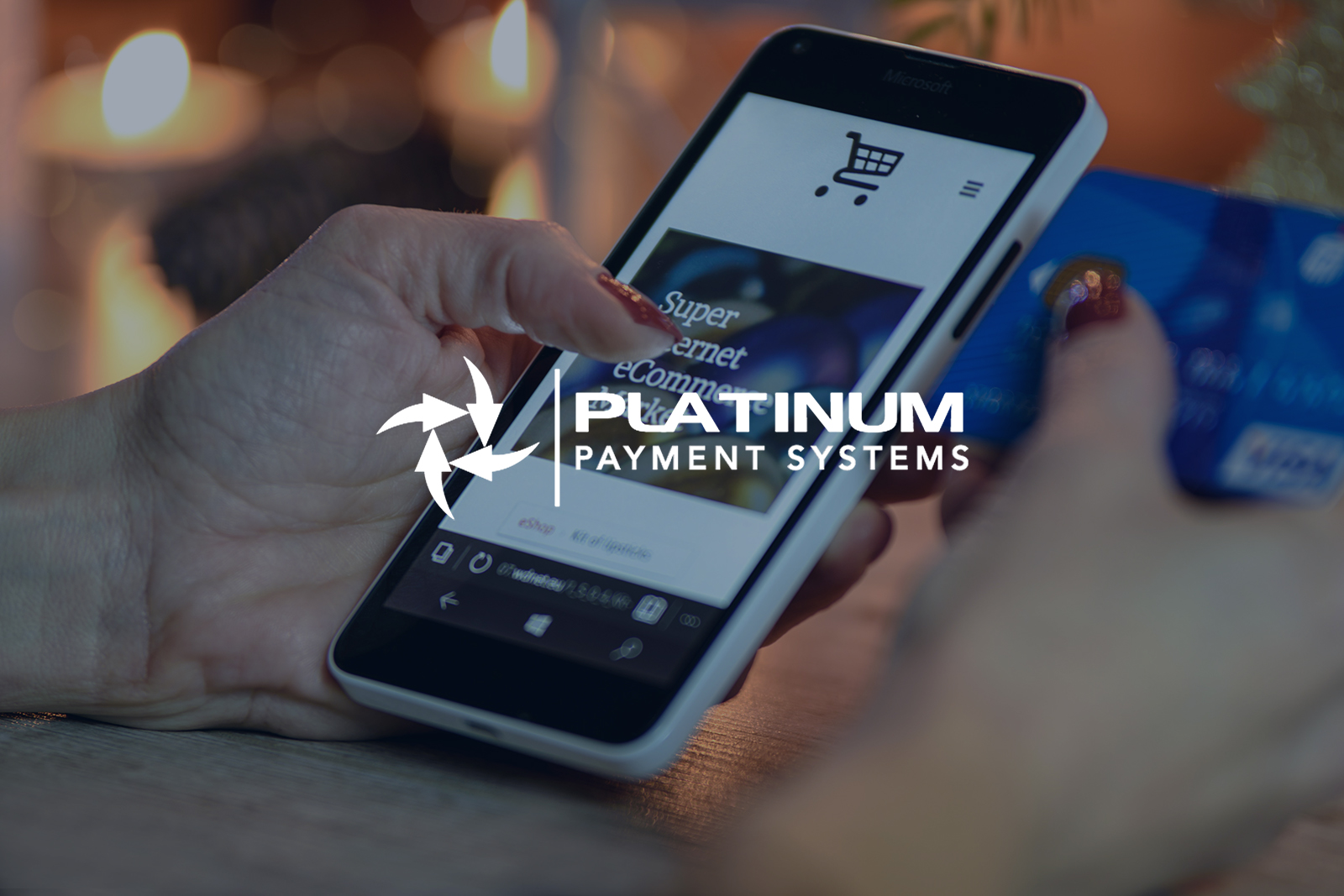World
Are Card-Not-Present Transactions Safe? We asked Platinum Payment Systems

Card-Not-Present (CNP) transactions are generally known to be riskier than Card-Present transactions, as they leave both the customer and the merchant open for fraud.
Online shopping is no longer the future, it’s the present.
In fact, 75% of people worldwide shop online at least once a month! This is according to Statistica, who has also reported that eCommerce sales are predicted to go as high as $4.2 trillion by the end of 2020 and over $6.5 trillion by 2023.
It’s no surprise then, that Card-Not-Present (CNP) transactions have become all the more prevalent. But, what exactly are card-not-present transactions? And, are they safe?
What Are Card-Not-Present Transactions?
First thing’s first, you’re probably already familiar with traditional Card-Present transactions.
Card-Present transactions are when a customer swipes a credit card through a terminal or mobile swiper, and the payment is processed by a merchant processor that facilitates the transfer of funds from the customer’s bank account and into the merchant’s business bank account.
In effect, a Card-Not-Present transaction is pretty much the same thing — funds are transferred from a customer’s bank account to the merchant’s bank account by a ‘middleman’.

The only difference is that, because the transaction is happening virtually, there is no way of physically swiping a card through a terminal. Which basically means, that the transaction has to happen with the card not present.
Evidently, this changes a lot of things. Including how the payment is settled.
Because, CNP transactions are initiated and authorized with the customer inputting their card credentials (their account number, card expiration date, card security code, etc.) through a payment gateway available on the merchant’s eCommerce store.
And, unfortunately, because it’s harder to prove card ownership with CNP transactions, it’s definitely riskier than traditional CP transactions. After all, with CP transactions, at the very least, the card’s physical presence allows for a more direct authentication process.
What Are the Risks of CNP Transactions?
As described above, because CNP transactions are virtually facilitated, there are more definite risks involved. And, the most common types of these risks are:
- Credit Card Fraud: Credit card fraud is more likely to occur for CNP transactions because it’s much easier to steal relevant credit card information (the account number, expiration date, security code, etc.) than it is to physically steal a card. This type of fraud definitely affects the card owner — who may not even notice that their card is being used to purchase items without their consent. But it can affect merchants as well — as it could lead to chargebacks.
- Chargeback Fraud: A chargeback fraud occurs when a customer purchases and then receives goods and services from a merchant and then has their payment returned to them by the bank because of an issue with the transaction. In this case, the merchant is at an obvious loss — as they lose out on both their product and the payment.
Either type of fraud is incredibly damaging for the merchant, and potentially damaging for the customer as well — which is why it is so important that you know how to protect your business, and secure your customers, from these types of risk.

The Bottom Line: How Can You Protect Your Business from The Risk of Card-Not-Present Transactions?
Fraud is an incredibly real danger. And, as mentioned, the risks of fraud are definitely higher for Card-Not-Present transactions. Fortunately, however, it’s not all bad. There are ways of mitigating these risks — whether you’re the buyer or a merchant.
For merchants, as an example, you can hire a merchant processor like Platinum Payment Systems, who offer both fraud and chargeback protection. And thus, can help support you with navigating through the risks involved.
In fact, in a recent interview, one of Platinum Payment Systems’ managing founders, Jed Morley, said: “Our goal with PlatPay, is to help others solve their payment processing problems and support them with whatever else they need to handle the risks and balance the different types of payments they receive.”
And so, again, while CNP transactions are not quite up to the same security standards as CP transactions are at present, there are ways of protecting yourself and your business from the risks. It’s just a matter of finding a solution that will work for you.
World
TRG Chairman Khaishgi and CEO Aslam implicated in $150 million fraud

In a scathing 52-page decision, the Sindh High Court has found that TRG Pakistan’s management was acting fraudulently and that Bermuda-based Greentree Holdings historic and prospective purchase of TRG shares were illegal, fraudulent and oppressive.
The Sindh High Court has further directed TRGP to immediately hold board elections that have been overdue and illegally withheld by the existing board since January 14, 2025.
In the landmark ruling, the Sindh High Court has blocked the attempted takeover of TRG Pakistan Limited by Greentree Holdings, declaring that the shares acquired by Greentree, nearly 30% of TRG’s stock, were unlawfully financed using TRG’s funds in violation of Section 86(2) of the Companies Act 2017.
“Having concluded that the affairs of TRGP are being conducted in an unlawful and fraudulent manner and in a manner oppressive to members such as the Petitioner (Zia Chishti), the case falls for corrective orders under sub-section (2) of section 286 of the Companies Act,” Justice Adnan Iqbal Chaudhry concluded.
The case was brought by TRGP former CEO and founder Pakistani-American technology entrepreneur Zia Chishti against TRG Pakistan, its associate TRG International and TRG International’s wholly-owned shell company Greentree Limited. In addition, the case named AKD Securities for managing Greentree’s illegal tender offer as well as various regulators requiring that they act to perform their regulatory duties.
The case centred around the dispute that shell company Greentree Limited was fraudulently using TRG Pakistan’s own funds to purchase TRG Pakistan’s shares in order to give control to Zia Chishti’s former partners Mohammed Khaishgi, Hasnain Aslam and Pinebridge Investments.
According to the case facts, the Chairman of TRG Pakistan Mohammed Khaishgi and the CEO of TRG Pakistan Hasnain Aslam masterminded the $150 million fraud. They did so together with Hong Kong based fund manager Pinebridge who has two nominees on TRG Pakistan’s board, Mr. John Leone and Mr. Patrick McGinnis.
According to the court papers, Khaishgi, Aslam, Leone, and McGinnis set up a shell company called Greentree which they secretly controlled and from which they started buying up shares of TRG Pakistan. The fraud was that Greentree was using TRG Pakistan’s funds itself. The idea was to give Khaishgi, Aslam, Leone, and McGinnis control over TRG Pakistan even though they owned less than 1% of the company, lawyers of the petitioner told the court.
This was all part of a broader battle for control over TRG Pakistan that is raging between Khaishgi, Aslam, Leone, and McGinnis on one side and TRG Pakistan founder Zia Chishti on the other side. Zia Chishti has been trying to retake control of TRG Pakistan after he was forced to resign in 2021 based on sexual misconduct allegations made by a former employee of his. This year those allegations were shown to be without basis in litigation that Chishti launched in the United Kingdom against The Telegraph newspaper which had printed the allegations. The Telegraph was forced to apologize for 13 separate articles it published about Chishti and paid him damages and legal costs.
After Chishti resigned in 2021, Khaishgi, Aslam, Leone, and McGinnis moved to take total control over TRG Pakistan and its various subsidiaries including TRG International and to block out Chishti. The Sindh High Court’s ruling today has reversed that effort, ruling the scheme fraudulent, illegal, and oppressive.
It now appears that Zia Chishti will take control of TRG Pakistan in short order when elections are called. He and his family are now the largest shareholders with over 30% interest. He is closely followed by companies related to Jahangir Siddiqui & Company which have over a 20% interest. The result appears to be a complete vindication for Zia Chishti and damning for his rivals Aslam, Khaishgi, Leone, and McGinnis who have been ruled to have been conducting a fraud.
TRG Pakistan’s share price declined by over 8% on the news on heavy volume. Market experts say that this was because the tender offer at Rs 75 was gone and that now shares would trade closer to their natural value. Presently the shares are trading at Rs 59 per share.
According to the court ruling, since 2021, shell company Greentree had purchased approximately 30% of TRG shares using $80 million of TRG’s own money, which means that that the directors of TRG Pakistan allowed company assets to be funneled through offshore affiliates TRG International and Greentree for acquiring TRG’s shares – a move deemed both fraudulent and oppressive to minority shareholders. The Sindh High Court also found illegal Greentree’s further attempt to purchase another 35% of TRG shares using another $70 million of TRG’s money in a tender offer.
The ruling is a major victory for the tech entrepreneur Zia Chishti against his former partners and the legal ruling paves the way for him to take control of TRG in a few weeks.
-

 Tech4 years ago
Tech4 years agoEffuel Reviews (2021) – Effuel ECO OBD2 Saves Fuel, and Reduce Gas Cost? Effuel Customer Reviews
-

 Tech6 years ago
Tech6 years agoBosch Power Tools India Launches ‘Cordless Matlab Bosch’ Campaign to Demonstrate the Power of Cordless
-

 Lifestyle6 years ago
Lifestyle6 years agoCatholic Cases App brings Church’s Moral Teachings to Androids and iPhones
-

 Lifestyle4 years ago
Lifestyle4 years agoEast Side Hype x Billionaire Boys Club. Hottest New Streetwear Releases in Utah.
-

 Tech7 years ago
Tech7 years agoCloud Buyers & Investors to Profit in the Future
-

 Lifestyle5 years ago
Lifestyle5 years agoThe Midas of Cosmetic Dermatology: Dr. Simon Ourian
-

 Health6 years ago
Health6 years agoCBDistillery Review: Is it a scam?
-

 Entertainment6 years ago
Entertainment6 years agoAvengers Endgame now Available on 123Movies for Download & Streaming for Free
